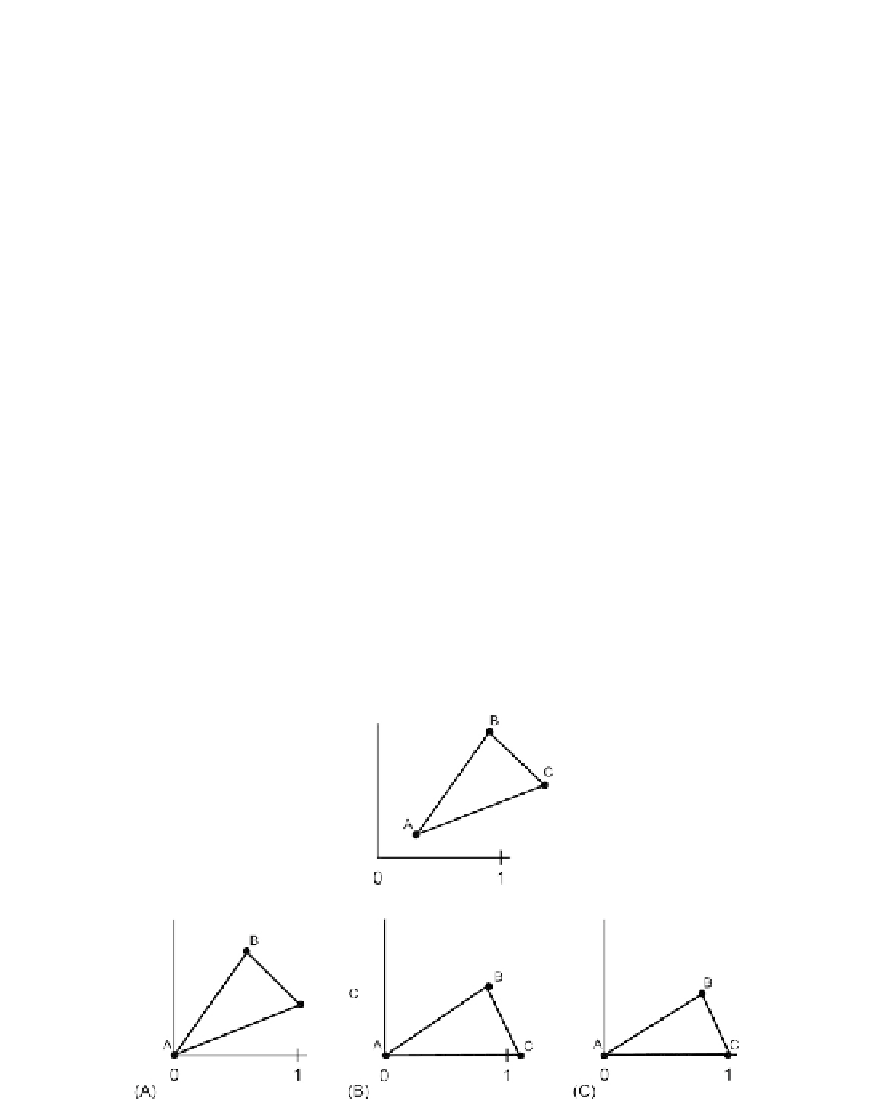Biology Reference
In-Depth Information
the same data. One way to apply these operations is shown in
Figure 3.1
: we can trans-
late the triangle so that one landmark is at the origin (0, 0) (
Figure 3.1A
). We can then
rotate the triangle so that the side AB is along the
X
-axis (
Figure 3.1B
) and, finally, we
can scale it so that the coordinate of landmark B is at point (1, 0) (
Figure 3.1C
). We can
then calculate the coordinate of the third landmark, C, in the coordinate system that we
have just defined. All of these operations can be applied without worrying about the
consequences for shape, because we have defined shape such that none of the operations
alter it. Notice that we have used a particular set of operations, translations of the
X
-and
Y
-coordinates of point A to (0,0), a rotation about A to place point B on the
X
-axis,
and then a scaling to make the distance from A to B equal to one. The different superim-
positions use different choices of how to carry out these basic operations. These three
are the only operations involved in calculating the coordinates of point C, which is
done according to the following formula, in which A
x
,A
y
,B
x
,B
y
,C
x
,andC
y
are the original
digitized coordinates, and SC
x
,andSC
y
are the coordinates of landmark C in the new
coordinate system:
SC
x
5
ð
B
x
2
A
x
Þð
C
x
2
A
x
Þ
1
ð
B
y
2
A
y
Þð
C
y
2
A
y
Þ
2
2
ð
B
x
2
A
x
Þ
1
ð
B
y
2
A
y
Þ
(3.1)
5
ð
B
x
2
A
x
Þð
C
y
2
A
y
Þ
2
ð
B
y
2
A
y
Þð
C
x
2
A
x
Þ
SC
y
2
2
ð
B
x
A
x
Þ
1
ð
B
y
A
y
Þ
2
2
(The numerators for the two equations really do differ in sign, as well as subscripts;
that is not a misprint.)
FIGURE 3.1
Three operations that do not alter shape, applied to a triangle. (A) Translation; (B) rotation;
(C) rescaling.




